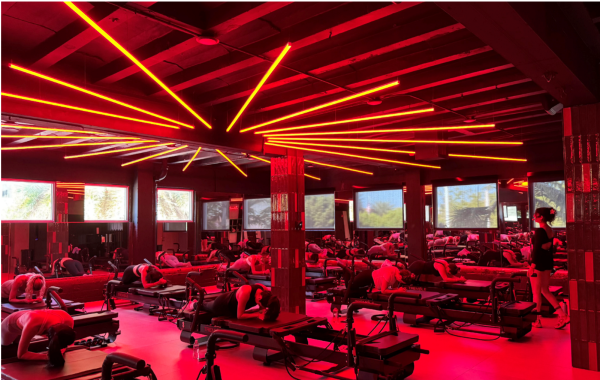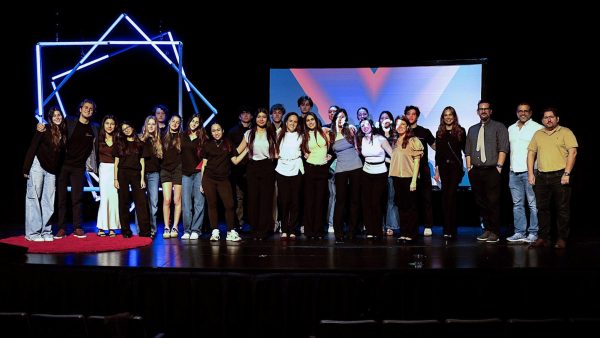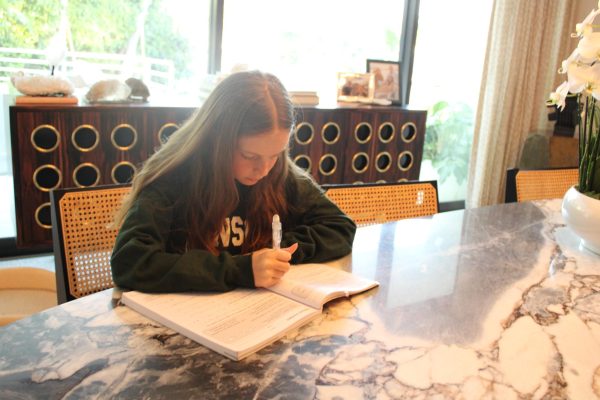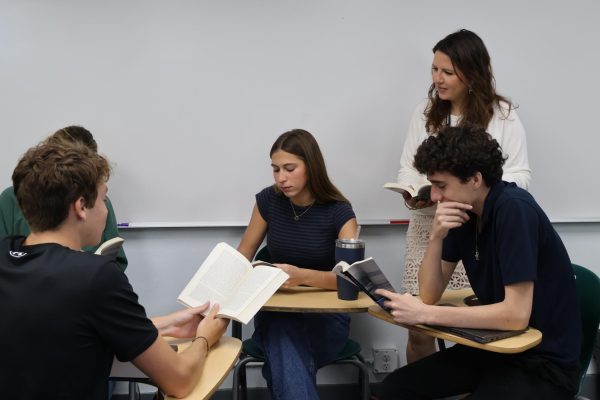Clubs and affinity groups take culture celebrations to the next level
A group of students performs traditional Brazilian music on the STEM steps during Carnaval.
Anyone who walked onto the Upper School campus on March 3 might have been slightly confused by the number of students packed into the STEM quad, munching on various Brazilian snacks, while Natasha Do Valle ’23 sang in Portuguese. But this cultural celebration was just one of the many that RE celebrated this year, including Chinese New Year hosted by the Chinese Culture Club, a belly dancer assembly hosted by PASA, and Diner en Blanc hosted by the French Club. While RE has always had cultural celebrations, this year the clubs focused on making them bigger than ever, in part because the student body was finally all in person.
The Chinese New Year celebration happened on February 1 and consisted of a variety of booths such as a calligraphy booth, a booth to learn traditional Chinese dances, and booths with different Chinese snacks. Yara Haddad ’22, president of the Chinese Culture Club, explained that their goal was to “accurately represent Chinese culture with our different booths” and make the activities “as authentic as possible.” The club spent weeks leading up to the event taste-testing different snacks to select which ones to present and learning to do the dances during club meetings so that they could teach everyone.
The green and yellow banners hung from each table and umbrella, the soft traditional Portuguese music performed by the RE band, and the variety of brigadeiros scattered in boxes on the tables all added to the ambience of RE’s Carnaval celebration. Mr. Felipe Amaro, a Spanish and Portuguese teacher at RE and the sponsor of the Brazilian and Lusophone Club, said that “one of the main goals we had was to not have people outside of school presenting the culture. We wanted to have the students participating and performing so they could get the community involved.”
When the French Club hosted Diner en Blanc on January 27, traditional French foods were served at lunch, along with a booth set up outside the cafeteria with traditional French snacks. The student body was asked to wear white, and many students participated. Sol Cuello Robert ’22, the secretary of the French Club, said that this event was about “celebrating the unity of a community and the value of solidarity by having a bunch of people all dressed in white.” The club brought a variety of snacks, including croissants, cheese and crackers, and other white foods such as powdered donuts.
However different these celebrations may have been, each was the direct result of both the students’ hard work and the strength of affinity groups on campus. Cuello Robert explained that Diner En Blanc “was entirely student run and funded,” and Haddad ’22 added that “the main reason we celebrate these holidays at our school is because of the affinity groups and clubs that we have.”
Mr. Amaro furthered this idea. “I think the school already had the initiative to start the Portuguese classes here, because without the Portuguese class we would still have Portuguese and Brazilian students, but we would not have had the same incentive to celebrate Carnaval. Because of the class, a lot more students felt represented, which led to the club, which led to the celebration,” he said.
For Natasha Do Valle ’23, Carnaval mattered because it made her feel like her culture was being represented. “I was very excited that I got to merge two things that I love – Brazilian culture and singing,” she said. “The event was a very fun way to celebrate Brazil, and I’m glad everyone enjoyed it.”







